- Overview
- Spotlight
- Photos
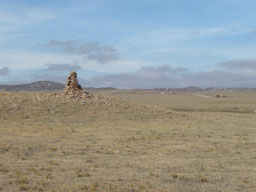
For more than 13,000 years, people have lived and worked in the area that is now Soapstone Prairie Natural Area (SPNA). Since the early 1900s sheep and cattle have grazed on the shortgrass prairie here–a rich environment for livestock, but always at the mercy of changeable and sometimes harsh natural forces. You can imagine the Basque sheepherders of the Warren Livestock Company whistling for their “blue” sheepdogs to get the flocks moving as a storm rolls in, hoping to get the sheep sheltered in their sheds and themselves settled in front of a warm stove in their wagons before the snow came.
Such was the scene before the “Blizzard of 1949” hit northern Colorado and southern Wyoming. The land that is now SPNA was then owned by the Warren Livestock Company (WLC), founded in 1883 by Francis E. Warren. Former WLC foreman David Cook recounted in his memoirs of the blizzard how the sheep that had been “snowed under” were able to survive for as long as ten days and could be located by steam rising from their nostrils through holes in the snow. In spite of being semi-frozen and unable to move when they were discovered, “they could be revived by rubbing and working their muscles.” Other animals “froze to death while standing,” he remembered.
This blizzard came at a time when the bottom had fallen out of the sheep market, eventually contributing to the halting of sheep grazing on the property. Although in 1963 the WLC sold their Colorado units to a group of independent ranchers called the Soapstone Grazing Association, in 1967 descendants of a Basque sheepherder named Paul Etchepare bought the remaining WLC properties in Wyoming, operating the company for 37 years before selling it in 2000.
Grazing has always been an integral part of the shortgrass prairie ecosystem, and limited cattle grazing continues at SPNA today, with acreage leased to the Folsom Grazing Association. SPNA is also home to numerous sites that bear witness to the cultural legacy left by millennia of American Indians, as well as the more recent ranching and homesteading history. SPNA is an important link in the Laramie Foothills Mountains to Plains Project, a corridor of protected lands that are home to pronghorn, elk, swift fox, burrowing owls and golden eagles, and rare and threatened plants.
Open to the public from March through November, visit SPNA and travel the hiking, biking, or horseback riding trails to gain a sense of the sweeping natural and cultural legacy here. Or just visit the overviews and picnic shelters and create your own journey as you enjoy the amazing views of the plains to the east, the Rocky Mountains to the west, and the foothills to the south.
Funding for SPNA came from citizens with the foresight to preserve the natural and cultural legacy of the place through dedicated open space sales taxes, and from grant monies provided by Great Outdoors Colorado (GOCO), The Nature Conservancy, Legacy Land Trust, and private landowners.
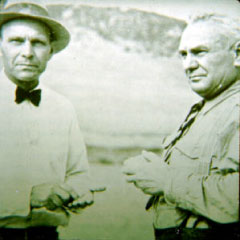
Located at Soapstone Prairie Natural Area (SPNA), the Lindenmeier Archaeological Site represents one of the most important archaeological sites in the Western hemisphere. Artifacts from the site were discovered by Fort Collins residents Claude Coffin and his son A. Lynn Coffin in 1924–strange, leaf-shaped arrowheads that would become known as Folsom points. Later joined by brother Roy, Claude Coffin's finds eventually attracted the attention of Frank H.H. Roberts of the Smithsonian Institution, who directed excavations at Lindenmeier between 1934 and 1940. Roberts’ investigations proved that people had lived in North America at the same time that now-extinct animals like the giant Ice Age bison (Bison antiquus), mammoth, sabertooth tiger, and camel existed–at least 11,000 years ago, much earlier than when other leading scientists believed.
More recently, archaeologists from Colorado State University have found evidence that American Indians have lived and traveled through SPNA continually since at least 13,000 years ago, up until almost 150 years ago when they were forcibly moved to reservations. For these tribal people, surviving throughout the millennia required a lot of specialized knowledge, knowledge that has been transmitted from one generation to the next. This knowledge was clearly demonstrated through the artifacts found at the Lindenmeier Archaeological Site–fluted Folsom points for hunting now extinct Ice Age game, bone needles for sewing hide clothing, inscribed bone items possibly used for ceremonial or gaming activities, beads made from a variety of materials, and other specialized tools for working wood, hides, stone, and bone.
Little did the Coffin family realize that their passion for learning about the past would open the door to a find that was twice as old as the Egyptian pyramids and internationally recognized as a cultural treasure, one that continues to reveal a complex and compelling picture of ancient life in the Americas. Where will your passion lead you?
The Lindenmeier Archaeological Site is a National Historic Landmark and is on the National Register of Historic Places. For more information on its discovery and exploration, you can read “The Excavation of Lindenmeier: A Folsom Site Uncovered 1934-1940,” published by the Fort Collins Museum of Discovery.
Click any of the green pins on the map to see visitor information about that site.
Download a printable version of Tour 3 complete with directions, maps, and activities.
Open this tour in Google Earth by downloading the KML version of this map.
Download a PDF of the brochure for Soapstone Prairie Natural Area.
Soapstone Prairie Natural Area
- Managing Agency
- City of Fort Collins Natural Areas Program
- Open
- March 1 to December 1. Some trails closed seasonally for wildlife protection.
Soapstone Prairie offers a remote, backcountry experience. Emergency response can take an hour or more. Be prepared! Start early in the day, plan for the weather and carry a trail map. Bring more than enough water, food and clothing. Cell phone service is not reliable, but there is an emergency call box at the entrance station. This is rattlesnake country so watch where you put your hands and feet and stay on established trails.
Pronghorn at Soapstone
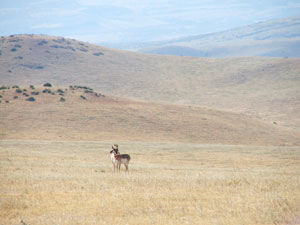
photo by Terry Burton
Museo de las Tres Colonias
- Location
- 425 10th St. Fort Collins
- Hours
- 12:30 to 3:00 pm on the third Saturday each month
- Cost
- Free
Designated as a Fort Collins Local Landmark in 2001, the former family home of John and Inez Romero now serves as a regional interpretive center that recognizes the contributions of the Hispanic community in achieving Northern Colorado ’s spectacular growth and development.
For more information, visit the Museo's website at http://museodellastrescolonias.org/Museo/Museo.html.
The Romero House
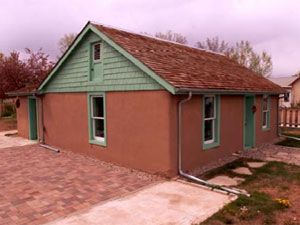
Photo courtesy of Poudre Landmarks Foundation
Colorado State University
- University Welcome Center
- Located in Ammon Hall (see map). Academic year hours: 7:45 - 4:45. Summer hours: 7:30 - 4:30
- Maps
- For a campus map, click here
- For a map of parking areas, click here
The Welcome Center at Ammon Hall is the university's official front door for visitors. The center offers general information about campus and the Fort Collins community, along with admissions information for prospective students and their families, including daily information sessions and campus tours.
For more information on planning your visit, see the Colorado State University website at www.colostate.edu/
Ammons Hall on the CSU Oval
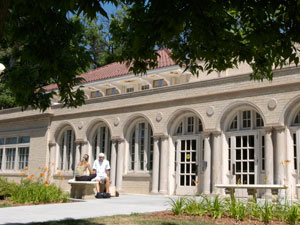
photo courtesy of Colorado State University
Cathy Fromme Prairie Natural Area
- Managing Agency
- City of Fort Collins Natural Areas Program
- Open
- 5:00 am - 11:00 pm
- Trails
- The paved Fossil Creek Trail is 2.5 miles one way.
- Parking
- Located at Shields Street (s. of Harmony) and Fromme Prairie Way (from Harmony take Seneca s. to Fromme Prairie Way).
Cathy Fromme Prairie is a rare example of Fort Collins’ pre-settlement shortgrass prairie landscape. Prairie dog colonies here support bald eagles and hawks. Horned lizards, ground-nesting songbirds, butterflies, rabbits, coyotes and rattlesnakes also can be seen. The raptor observatory, built into the hillside near the Shields Street entrance, is an excellent place from which to watch hawks and eagles, especially in winter. Educational activities are offered from May - October.
Fossil Creek Trail
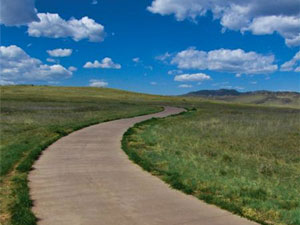
photo by Ryan Burke


